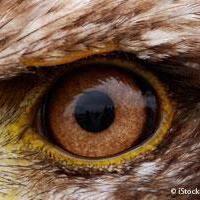0


















| Thumbs Up |
| Received: 77 Given: 54 |
















| Thumbs Up |
| Received: 4,844 Given: 4,542 |

I ment that culturally Normans had a huge impact, but I would think genetically also above their numbers, but they where large part Norse themselves.
How much of the R1b is of Nordic origin is the deciding factor, we now know women also moved from the continent so that brings up the Germanic part.
"If the enemy is not attacking from the East it has flanked." Finnish proverb
http://www.youtube.com/watch?v=Xu8D9GaQwIs















| Thumbs Up |
| Received: 2,289 Given: 6,248 |

R1b U106 is probably not related to halstat and la tene. First R1b U106 has been found in Southern Sweden 2275-2032 BC BC and plotted with Norwegians and Swedes. It's been suggested that these people likely contributed significantly to Proto-Germanics.
At the moment it's impossible to say where exactly Proto-Germanic was born, however you should take a look at this. It's from the site anthrogenica and it's quite interesting.
People speaking a dialect of Proto-Indo-European moved north from the Usatovo culture on the European steppe.
They crossed the north European plain, where they mixed with TRB farmers, who spoke a non-IE language, and they adopted a lot of words from that language. They also came into contact with Celtic [correction - Italo-Celtic/western IE] speakers.
The mixed group entered Scandinavia, which at the time had a suitable climate for arable farming. There they encountered people speaking other languages and adopted words from them. (About 1/3 of the Germanic lexicon is non-IE.)
Then the climate turned too cold and wet in Scandinavia, forcing farmers south into the Jastorf culture and its equivalent in Pomerania. Here they came into contact with iron-working Celts and adopted some words from them. This is where the final sound changes seem to have taken place that created Proto-Germanic about 500 BC.
Proto-Germanic is the final stage of the language before it split into East, West and North Germanic. The first to split away was East Germanic (Gothic). The Goths moved south not because of floods (as far as I know), but in pursuit of better opportunities to the south, with which they were familiar because of the amber route.
Flooding certainly seems to be involved in driving some of the West Germanic speakers away from the (Proto-Germanic) homeland and areas that they had spread into from that homeland. Obviously they didn't all leave!
I would say R1b-U106, R1a and R1b-L11* contributed mostly to Proto-Germanic. Germanic language has around 1/3 non-ie the Germanic lexicon. I believe that I1 was rather ''Germanized'' and partly contributed the 1/3 non-ie of the Germanic lexicon
















| Thumbs Up |
| Received: 4,844 Given: 4,542 |

This a traditional and good explanation but it does not explain the proto-Finnic contact from the start, more northern location in Sweden, Finland or Baltic coast would explain it.
Gutasaga tells that the first place Goths migrated to on their route to modern Russia was in modern Estonia, and East-Germanic was the first to separate from proto-Germanic, again pointing more North.
I dont take everything literally in the sagas but brushing them aside is also not wise IMO.
"If the enemy is not attacking from the East it has flanked." Finnish proverb
http://www.youtube.com/watch?v=Xu8D9GaQwIs













| Thumbs Up |
| Received: 2,614 Given: 1,554 |

I1















| Thumbs Up |
| Received: 2,289 Given: 6,248 |

I am aware of Jaska's posts and views about Proto-Germanic.
His post
One thing is for sure that the development of the Proto-Germanic language was very complicated, all options are still open.Your open-minded suggestion seems quite valid at the moment, if we take a look at the linguistic evidence:
1. Lots of Germanic loanwords not only in Finnish but in Saami, too, including layers like: Northwest Indo-European, Pre-Germanic, Palaeo-Germanic, Proto-Germanic, Northwest-Germanic, Proto-Nordic...
2. Only few loanwords between Germanic and Baltic (or Slavic), and none preceding the proper Proto-Germanic level of reconstruction (although older loanwords would be more difficult to distinguish from the real inherited cognates).
3. Proto-Finnic and Proto-Saami are found in the Southwestern Finland at the Proto-Germanic era, around 500 BC (since which we also have retained Germanic placenames in Finland); before that Finnic was spoken in the southern side of Gulf of Finland, and Saami somewhere in Karelia. Saami does not spread to Lapland before the Christian Era, and Finnish still a millennium later.
Indeed, we have a solid basis to argue that the Germanic homeland was in Southwestern Finland (maybe already since the Corded Ware Culture).
One counter-argument:
Few proposed Celtic loanwords in Germanic supposedly precede the Grimm's Law, thus representing southwestern contacts already during the Palaeo-Germanic times (~1000-500 BC).
















| Thumbs Up |
| Received: 4,844 Given: 4,542 |

There are also some recent papers surrounding this issue, the proto-Finnic contact from the start is a fact.
Question is where are the two in close contact, if it is not in Estonia or Finland then we have the L550 with a possible spread also in Sweden at that time.
http://www.yfull.com/tree/N-Z4908/
My guess is that Jaska is working on something as he has been pretty quiet.
"If the enemy is not attacking from the East it has flanked." Finnish proverb
http://www.youtube.com/watch?v=Xu8D9GaQwIs














| Thumbs Up |
| Received: 3,828 Given: 9,772 |













| Thumbs Up |
| Received: 18 Given: 12 |

Surely not I1, as this is pre-Germanic factor. Pre means BEFORE. And Germanic people are Indo-Europeans. I-people are not.

el bumpo
There are currently 1 users browsing this thread. (0 members and 1 guests)
Bookmarks